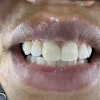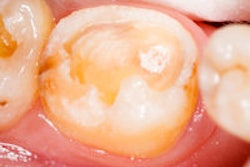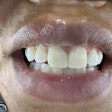Applying a fluoride-releasing glass-ionomer cement (GIC) to proximal lesions can help reduce the progression of initial proximal caries in posterior teeth, according to a study in the Journal of Dental Research (September 21, 2010).
The split-mouth study, conducted at Chulalongkorm University in Thailand, involved 41 pairs of posterior teeth in patients ages 7 to 19 who had undergone elastic band separation. Each participant had to have at least one contralateral pair of permanent posterior teeth with proximal caries lesions having depths of either 1 or 2.
The researchers cleaned, conditioned, and dried the teeth, then applied Fuji VII (GC Corporation) GIC over each lesion. (Fuji VII was used because of its higher fluoride-release properties compared to Fuji's other GIC product, the researchers noted.) The setting was immediately accelerated with light curing. After the cement was set, varnish was applied. All participants also received preventive treatment consisting of twice-daily use of 1,000-ppm sodium-fluoride dentifrice and tray application of 1.23% acidulated-phosphate-fluoride gel.
When follow-up bitewing posterior radiographs were taken at 6 and 12 months, the researchers found that statistically significant differences in mean lesion depth between the test (p < 0.05) and control groups (p < 0.0001). They also found that lesions treated with the GIC were more likely to remain in or regress to the outer half of the enamel, with a 13.8% reduction in lesion depth for the test group and 1.7% for the control group.
"To our knowledge, this study is the first clinical report which used GIC for the direct management of initial proximal caries," the researchers wrote. "Results of our study demonstrated that the application of GIC to early noncavitated proximal caries lesions inhibits progression and enhances regression of the lesions."
This technique should be regarded as an interceptive method in cases in which home use of remineralizing products is not feasible or when poor patient compliance is anticipated, they added.
Copyright © 2010 DrBicuspid.com



















